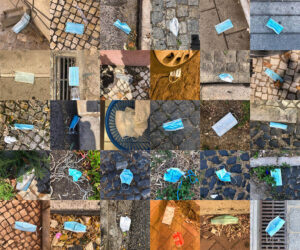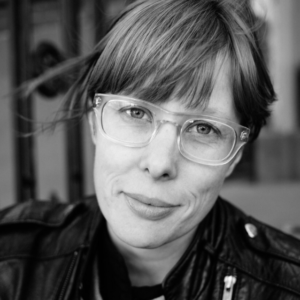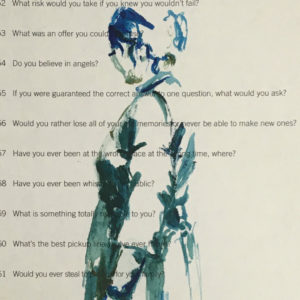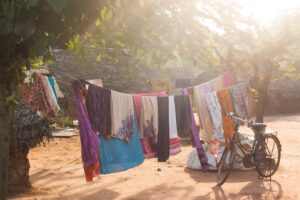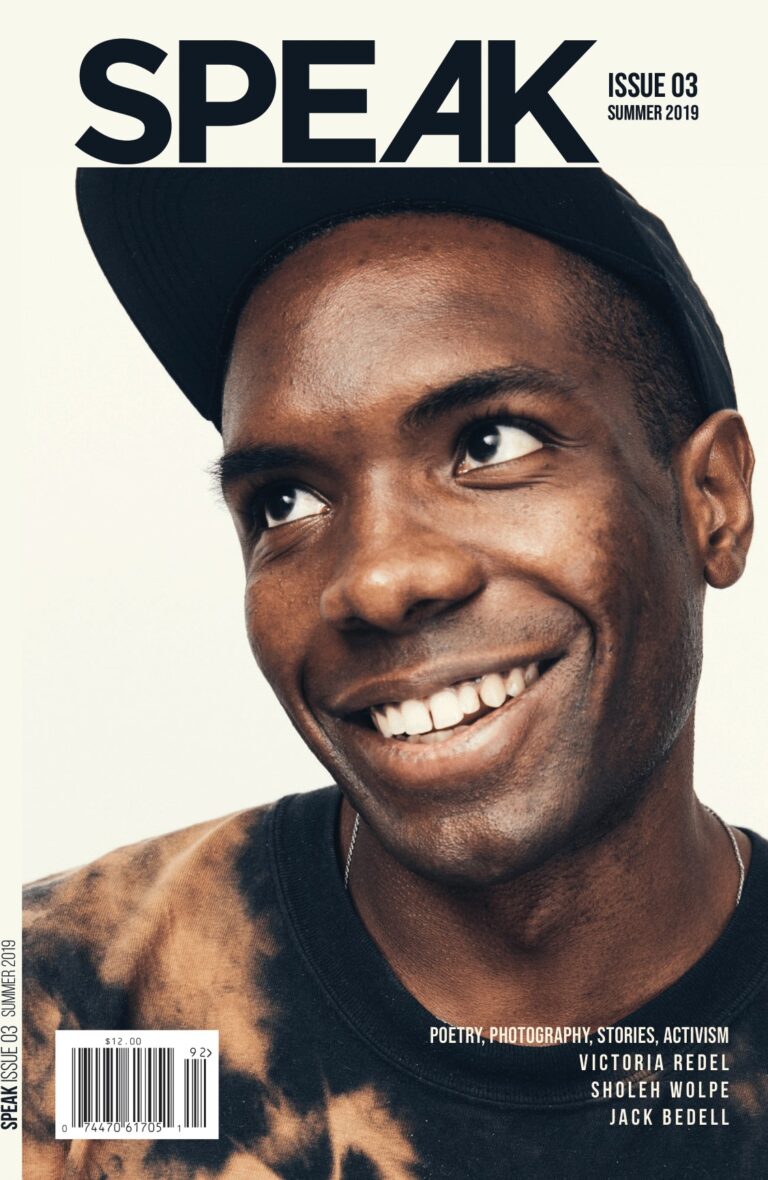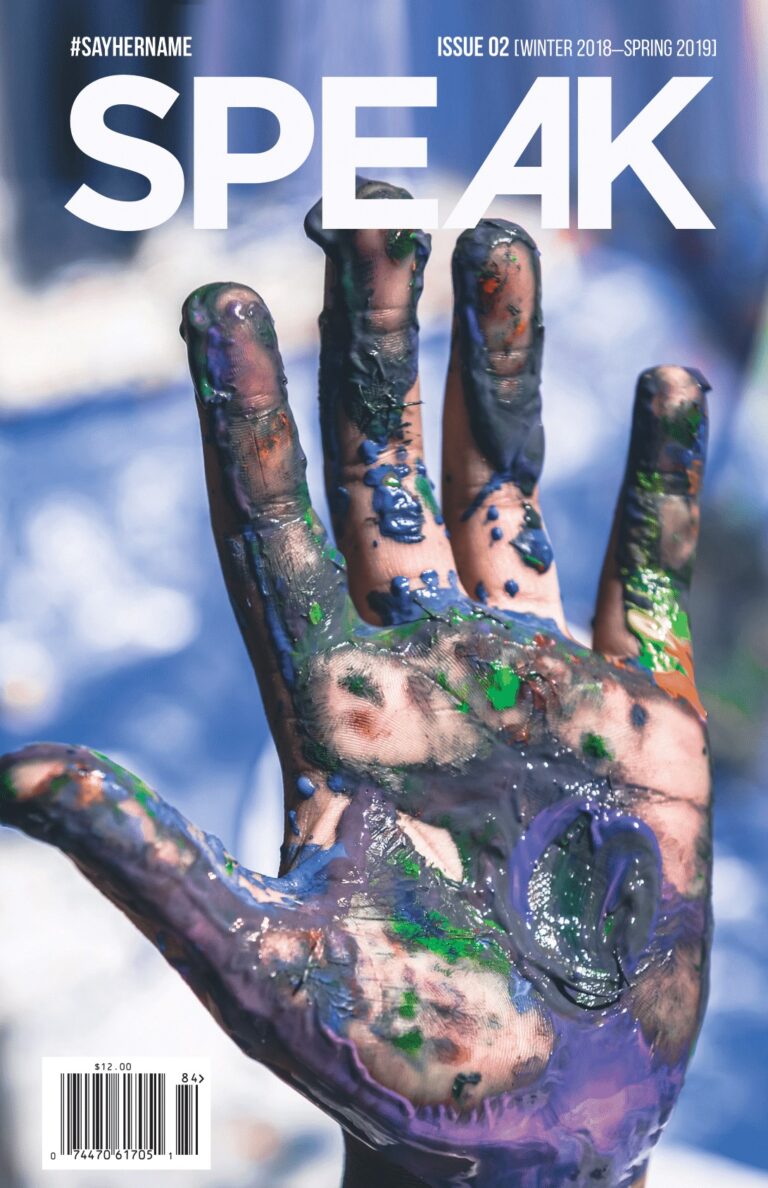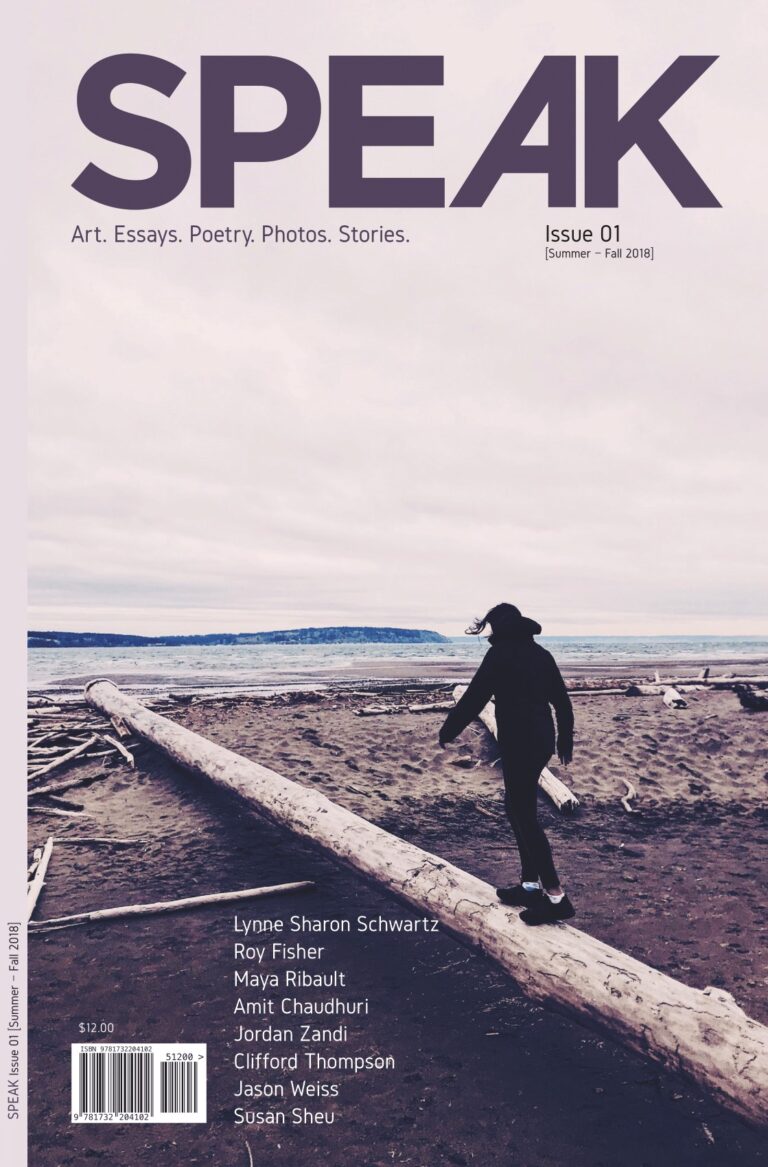Activism
When There is a Global Anti-Caste Movement
A Conversation with Yashica Dutt by Liesl Schwabe
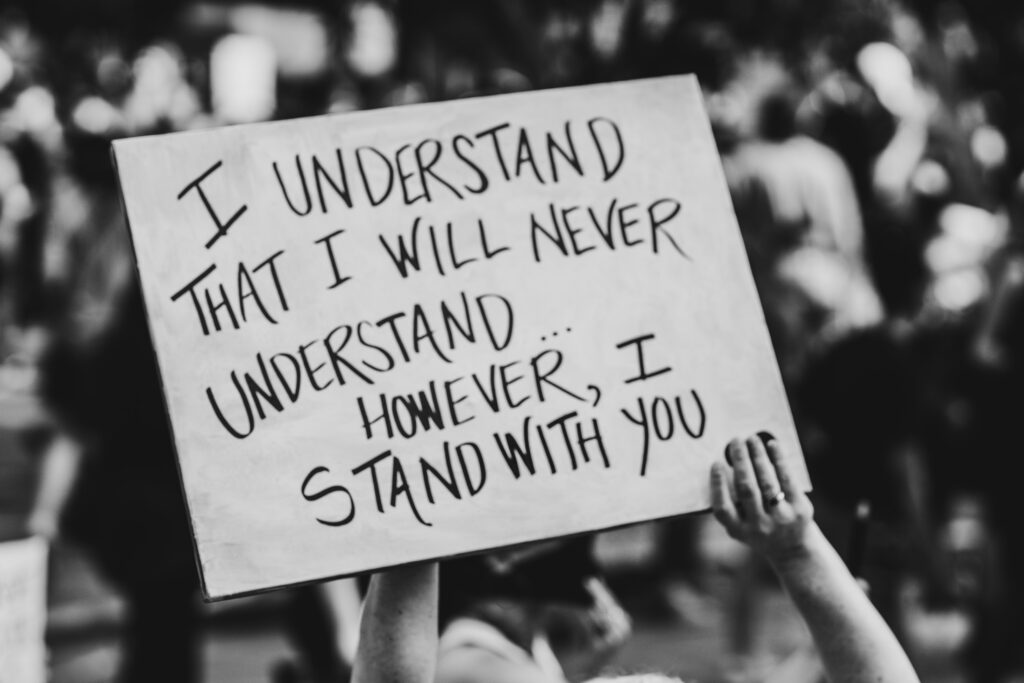
Yashica Dutt was a graduate student at Columbia University when she first encountered the concept of African Americans “passing” as white to avoid discrimination. Though she was new to the U.S., Dutt recognized herself in the practice. As a little girl growing up in India, throughout her undergraduate years at Delhi’s prestigious St. Stephens College, and while working as a journalist, Dutt “passed” as upper caste, hiding the fact that she had been born Dalit (formerly known as “Untouchable”). But when the openly Dalit PhD student Rohith Vemula committed suicide in India in 2016 after prolonged caste-related torment, Dutt knew she could no longer keep silent. She was still at Columbia, but after her initial Facebook post went viral, Dutt soon appeared on Indian television, announcing the truth of her identity to the entire country.
In her powerful memoir Coming Out as Dalit (Aleph, 2019), Dutt tells her own story while also integrating extensive contemporary reporting and historical research. Also included are references to the life and work of Dr. B. R. Ambedkar, a Dalit who attended Columbia 100 years earlier and who went on to write the Indian constitution, but whose writing and work as a human rights activist have largely been kept out of the mainstream national discourse, even while Ambedkar is heralded as a national hero.
In India today, more than 200 million people are Dalits (or Scheduled Castes). They are routinely denied access to education, land, and water. Dalit women experience significantly higher rates of sexual abuse, and measures securing a portion of university seats and government positions for Dalits (known in India as “reservations”) have triggered enormous backlash. Against this backdrop, Dutt’s book is at once fiercely personal and tremendously eye-opening, providing essential context and clarity to the persistent stigma of caste – within India and beyond.
In May, 2020, just a few days before George Floyd was killed by police in Minnesota and protests against white supremacy erupted worldwide, we spoke over Zoom, each of us from our homes in Brooklyn, NY. Yashica’s calls for global solidarity now ring with that much more urgency. (This conversation has been edited for length and clarity.)
I first encountered your book while living in India, but as an American, I was struck by how clear and orienting the narrative is for any audience, westerners unfamiliar with caste, as well as South Asians presumably all too familiar with caste. Were you writing with a specific audience in mind?
I wanted to make the book a manifesto for a fourteen or fifteen-year-old Dalit child in a small town in rural India. Someone without access to the writings of Ambedkar or any kind of radical awareness. Someone who was discriminated against, who was told they’re not good enough or that they don’t belong in a school or college community. Someone who doesn’t know what to say to the bullies in their classes or to their teachers. I didn’t know what to say. I knew this [discrimination] was wrong, but I didn’t know what to say to defend myself. So my question became how do I create a sense of pride with a narrative that has always been associated with shame.
In terms of writing choices, I knew I wanted to bring the book to the United States. I was living here when I started writing the book, and as a career journalist, I knew it was important for the book to reach a wider audience. The prose and the explaining of the terms – all of that was deliberate.
I was also trying to do a lot of things with this book, including bring an analytical force to my argument. A lot of times, the arguments we do hear against caste are very emotional, hinged on suffering and violence, which are absolutely accurate. But I wanted to bring journalistic rigor and objectivity into the book, so that even the most centrist or right-wing person could see the logic, the reasoning, and the rationale. I made that effort so that when people read the book, they cannot just say “this is your opinion.” Because this is not my opinion. These are facts, which I have supported with data, and this is a very clear narrative of history. These choices have also helped people unfamiliar with caste to understand. And, of course, Indians being themselves, they needed a very sharp reminder, too, that this is what our society is built on.
Human Rights Watch has called caste India’s “hidden apartheid”. Yet outside of South Asia, if people have heard of caste at all, they might think of it simply like different vocational guilds, which is basically what we’re taught in American social studies classes. How do you introduce the depths of caste discrimination? Where do you start?
Hinduism does a very skillful job of whitewashing history; they say that they created a society with four different sections, so somebody was given this job, somebody was given that job, and these jobs were assigned by birth and that’s it. But that’s not it because the caste system created systematic inequality, and people got stuck with those professions for generations. For thousands of years. The closest parallel in the U.S. is racism. People can say racism is over – that it was over in the 19th century or it was over when Obama was elected. But it’s not over because of systemic inequality. It’s the same way with caste.
To someone who knows absolutely nothing, I would say that caste is the gear that turns every system in the country. It is the bedrock, the foundation of Indian society. Even though constitutionally we are equal, the inequality is so deeply embedded that every idea, every behavior, or policy decision – especially with this government – is based on the idea that Indians are not fundamentally equal.
No amount of money, social privilege, or stability can divorce you from your caste. Sometimes people ask me about the U.K. and if caste in India is similar to the feudal system in England with lords, counts, and commoners. And sure, it is, but what is different about caste is untouchability. The inequality is so deep that it becomes that person. It’s not just that the profession that person is doing in heinous, it’s that manual scavenging (cleaning non-flush toilets by hand) or dealing with dead animals – this work becomes their whole identity. That’s the critical difference. Caste is India’s race that cannot be identified by the color of our skin, but by our last names. In India, you can’t see it, but everyone knows it.
In India, I’ve heard the sentiment that caste is ‘never going to go away.’ How much of an obstacle does that history become in advocating for change in the future?
You know, no one is ever going to say that sexism is great. Or that it’s great that the British pillaged half the world. But, for instance, when women in India see feminism in the West, it builds a kind of solidarity. I’m not saying that India doesn’t have its own radical movements independent of western thought or ideology. But why is it easier for a lot of liberal Savarnas [caste Hindus, literally ‘good color’] to say feminism is great but anti-caste movements are not? It’s because caste has been normalized to such a huge extent in India that I myself, growing up as a Dalit person, facing the oppression that I did – which in no way comes close to someone in a village – I did not think there was any other way to be.
So how do we think about change? How do we think about progress? The way forward is for allies as well as Dalits to normalize the idea that caste is wrong. That’s the place to start. Because even now, a lot of people don’t think there’s anything wrong with this inequality. That’s why it’s so important for us to talk about this in the U.S., to say let’s all agree that caste inequality is horrible. Because when there is a global anti-caste movement, then a lot of people on the subcontinent will say, ok, if people in the U.S. or the U.K. or South Africa think this is wrong, then maybe it is. Maybe there’s something we can do to change this.
In your book, in addition to your own story, you also pull together a lot of historical research and social context. In that process, what did you learn about the world that shaped you?
I did not read Ambedkar until I started writing my book. But reading Ambedkar and researching this book changed my entire worldview. I’d read about Gandhi and his “children of God” movements, his idea that we have to help these poor, downtrodden people, but that perspective has always come from the Savarna-savior position of let’s make life better for them.
Ambedkar positions Dalits or lower-caste people as absolute equals. And I know it sounds simple, but that realization was life changing. I was thirty at that time, and I’d spent my life thinking I was not equal, which affected my sense of self-worth and my relationship with my community. I left my community, not because I thought it was inherently bad, but because I didn’t want to be found out.
In writing this book, I was also discovering, as a 31- or 32-year-old woman, how to stand up to people. That’s what the journey of research for this book did for me.
There is no shame in being Dalit. There is no shame in doing the work we are forced to do because we were born into a certain family. I was deeply ashamed of my roots; my grandparents did manual scavenging work. Previously, I would not have had the confidence to speak about this so publicly. Four years ago, if I admitted on a public platform that my grandparents cleaned toilets, that would have shriveled me with shame. But writing this book gave me the confidence and the knowledge of why equality is true.
In India, there has been intense resistance to Dalit rights, including that by educated progressives. Can you help Americans grapple with this resistance?
Most people who are attracted to leftist ideals are so because we see so clearly what is wrong. Why would anyone think capitalism is a great idea? Why would anyone think white supremacy is a great idea? Injustice becomes very clear when we look an ideology. But when a lot Savarnas look at caste, it doesn’t occur to them that it is wrong because it doesn’t occur to them that they have any privilege.
A lot of leftists in the 1940s said that Ambedkar’s anti-caste movement was weakening the nationalist movement. That using the British to uplift the Untouchable community, which Indians certainly weren’t going to do, was weakening the anti-colonialist movement. So for the leftists at that time, it was easier to build solidarity with Cubans halfway around the world, than with people who lived with them, their Dalit neighbors or people living in a ghetto-ized space nearby.
At the same time, when you really question caste, you have to question – like I did – everything around you. You have to question the festivals you’ve grown up celebrating. You have to question who the villain is in those stories. You have to upturn your way of life. Colonialism is wrong because it was affecting everybody, so that’s an easy villain. Caste is not an easy villain because, in India, it makes you the villain.
At the same time, under the current right-wing, Hindu nationalist government, it’s my understanding that violence again Dalits is growing. Can you talk a little bit about how that plays out?
I’m not a political analyst, but this is one of the most fastidious governments India has seen in a long time. The BJP (the Bharatiya Janata Party, the ruling, right-wing, Hindu Nationalists) is appealing to Dalits, in part, by appropriating both local and national icons. As we know, among people who are that oppressed, there is often an increased need for faith. So there are these hyper-local gods and icons, which no one outside of a specific area would even recognize. But the BJP goes into these communities to declare that these local deities are Hindu and therefore that [the Dalit communities] are also Hindu. On the national level, the BJP is claiming that Ambedkar was RSS in order to rebrand him as a Hindu icon, and they’ve already declared the Buddha as an avatar of Vishnu. This appropriation is happening to increase and consolidate power.
At the same time, the government curtails any voices of dissent. With Anand Teltumbde and other Dalit activists, the BJP is stuffing them in jails. Anybody who is raising a voice against communalism (sectarian violence) or documenting how Dalits are at risk under the BJP, these writers are being locked up on flimsy charges under the Unlawful Activities Prevention Act (UAPA). And in the rural areas, the RSS says, ‘oh, you’re a cow trader’ or ‘oh, you’re showcasing pride with your mustache and we’re going to beat you to death.’ They [the BJP] tells Dalits, ‘[You] can have a seat at the table, but that seat is at our feet.’

We’re in the midst of the global Coronavirus pandemic. India has been under one of the strictest and most abrupt lockdowns in the world, which has left millions of people without jobs or homes and has forced tens of thousands of migrant workers to leave the cities and return to their villages, often on foot. How do you anticipate Covid-19 will impact Dalits specifically?
Who does not own land, and therefore, who has to migrate to the cities? Dalits. A lot of those migrant laborers are Dalits, which is not to say there are no upper caste people, but the majority of those migrant labor communities are Dalit. At the same time, for sanitization workers, who were already facing inhumane conditions, the threat of this virus makes that work a death sentence.
This pandemic is classist and caste-ist. The virus might not discriminate, but who is able to protect themselves from the virus is absolutely based on systemic discrimination and inequality and that is true for India, as well.
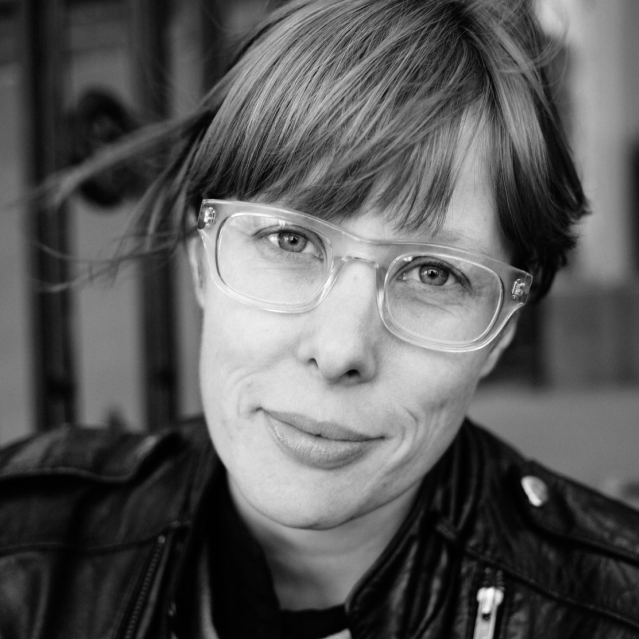
meet the author
Liesl Schwabe
Liesl Schwabe’s essays have appeared in the New York Times, the Washington Post, The Los Angeles Review of Books, Words Without Borders, Creative Nonfiction, and The Rumpus, among other anthologies and publications. She served as a 2018-19 Fulbright-Nehru Scholar in [...]

meet the author
Yashica Dutt
Yashica Dutt is a journalist and the author of Coming Out as Dalit. She spent a decade covering arts, culture, and fashion in New Delhi and a lifetime hiding her Dalitness to pass as ‘upper’ caste. Until she ‘came out’ as Dalit [...]
Read More
Subscribe to our newsletter



